Ceramic and Pottery: A Journey Back in Time
Exploring the rich history and evolution of ceramics and pottery, this article delves into their cultural significance, techniques, and the artistry involved in creating these timeless crafts. From the earliest days of human civilization, ceramics have played a pivotal role in our daily lives, serving not just as functional items but also as a canvas for artistic expression. Imagine the first ancient potters, their hands caked in clay, shaping the very essence of their culture into beautiful vessels that would tell stories for generations to come. Isn't it fascinating how something as simple as clay could weave together the threads of human history?
Throughout the ages, ceramics have transformed, reflecting the changing tides of society, technology, and art. As we journey through this captivating world, we will uncover the techniques that have emerged, the cultural significance of pottery, and the artistry that continues to inspire artisans today. Each piece of pottery is a testament to the creativity and skill of its maker, encapsulating a moment in time that resonates with both beauty and functionality.
So, grab a cup of tea, sit back, and let’s embark on this exploration of ceramics and pottery, where every shard tells a story, and every glaze reveals a glimpse into the soul of our ancestors.
Ceramics have been a fundamental part of human history, dating back thousands of years. The earliest evidence of ceramic creation can be traced to around 29,000 BC with the discovery of the Venus of Dolní Věstonice, a small figurine made from clay. This not only highlights the ingenuity of early humans but also their desire to create and express themselves. In ancient civilizations, pottery was essential for storage, cooking, and ceremonial purposes, making it a cornerstone of daily life.
As we dig deeper into the past, we find that pottery was not just about utility; it was also a medium for artistic expression. Different cultures developed their unique styles and techniques, often influenced by their environment, beliefs, and technological advancements. For instance, the intricate designs of Chinese porcelain and the vivid colors of Native American pottery showcase the rich diversity of ceramic art across the globe.
Various pottery techniques have emerged throughout history, each reflecting the cultural and technological advancements of their time. The methods of creating pottery have evolved, but the essence remains the same: transforming raw clay into something beautiful and functional. Here, we discuss key methods such as hand-building, wheel-throwing, and glazing, each contributing to the rich tapestry of ceramic art.
Hand-building techniques, including coiling and pinching, have allowed artisans to create unique forms and designs. This section highlights the skills and creativity involved in these age-old practices. With hand-building, the potter has complete control over the form, allowing for the creation of organic shapes that can’t be replicated by machines. It’s almost like sculpting with clay, where each piece is a reflection of the maker’s personality and style.
The coiling technique involves shaping clay into coils to build up walls of pottery. This method is not only functional but also allows for artistic expression in form and design. Imagine layering those coils, one atop the other, creating a vessel that is both sturdy and elegant. Each coil can be smoothed out or left textured, giving the potter the freedom to express their creativity.
Pinching is a simple yet effective method where the clay is shaped using fingers. This ancient technique results in organic forms and is often used for small-scale pottery. It’s a tactile experience, where the potter’s fingers mold the clay into unique shapes, making each piece a one-of-a-kind creation. The beauty of pinching lies in its simplicity, allowing even beginners to create stunning pottery without the need for complex tools.
The invention of the potter's wheel revolutionized pottery making. This section examines how this technique enhanced efficiency and precision in creating symmetrical and intricate pottery. The wheel allows for a level of control and speed that hand-building methods cannot match. Think of it as the difference between painting with a brush and using a spray gun; both can create beautiful art, but the techniques and outcomes are vastly different. The potter's wheel has enabled artisans to push the boundaries of creativity, producing stunning pieces that are both functional and decorative.
Pottery serves as a reflection of cultural identity and heritage. In this section, we explore how different cultures have used pottery for functional, spiritual, and artistic purposes. Pottery is often more than just a vessel; it embodies the traditions, beliefs, and stories of the people who create it. For example, the intricate designs on African pottery often tell stories of the community, while Japanese tea ceramics reflect the philosophy of simplicity and harmony.
Many cultures imbue their pottery with symbolic meanings. This part discusses the motifs and designs that convey stories, beliefs, and values through ceramic art. From the intricate patterns of Native American pottery to the delicate brushwork of Chinese ceramics, each design tells a story that connects the viewer to the culture from which it originates. Isn’t it amazing how a simple pot can carry the weight of history and tradition?
Pottery often plays a significant role in rituals and ceremonies, serving both practical and spiritual functions. This section highlights its importance in various cultural practices around the world. Whether it's a ceremonial bowl used in a wedding or a sacred vessel for offerings, pottery has been integral to human rituals. In many cultures, the act of creating pottery itself is seen as a spiritual practice, connecting the artisan to their ancestors and the earth.
- What is the difference between ceramics and pottery? Ceramics is a broader term that encompasses all items made from clay that are fired at high temperatures, while pottery specifically refers to items made for practical use, such as dishes and containers.
- What are some common pottery techniques? Common techniques include hand-building (coiling and pinching), wheel-throwing, and glazing.
- Why is pottery considered an art form? Pottery is considered an art form because it combines functionality with creativity, allowing artisans to express their individuality and cultural heritage through their work.
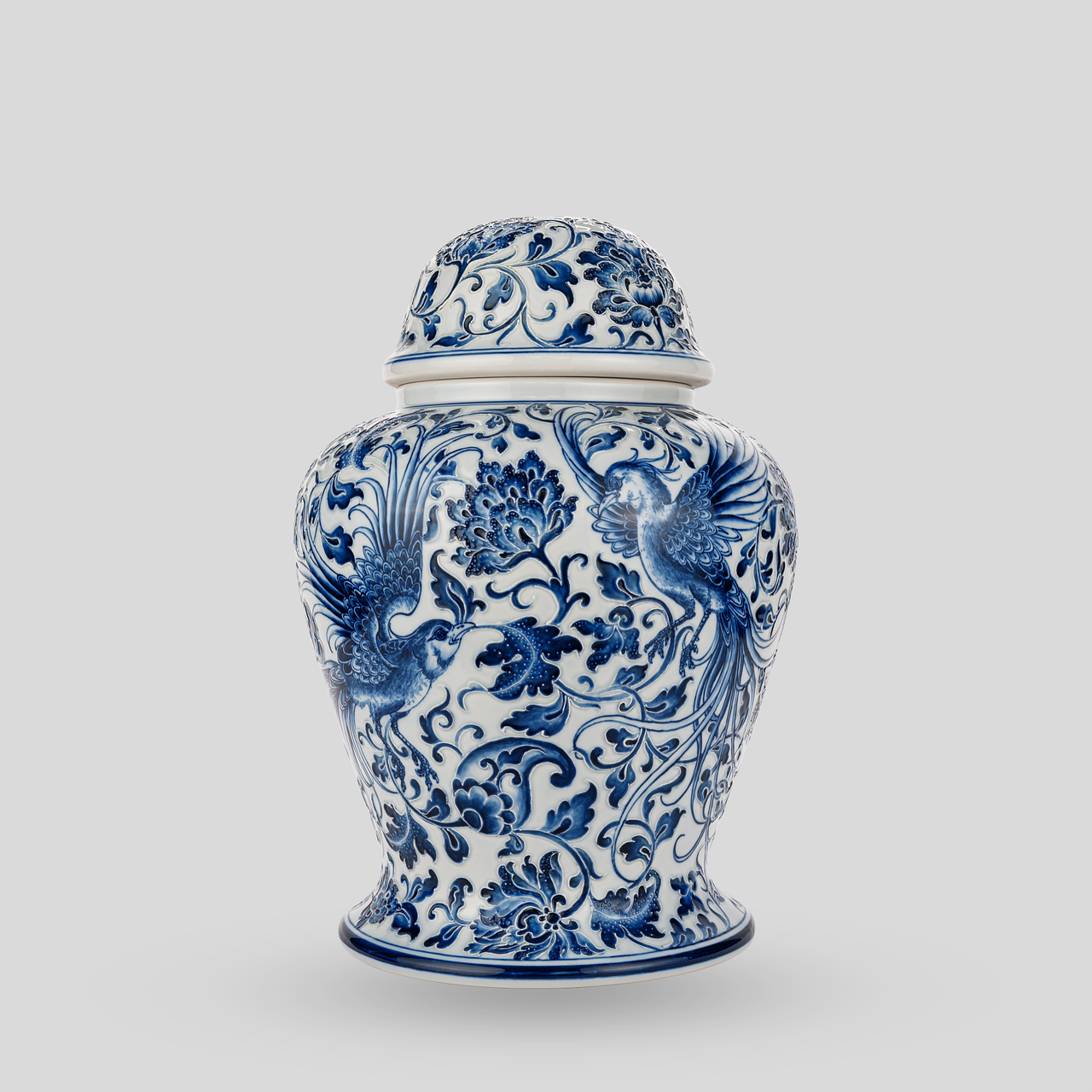
The Origins of Ceramics
Ceramics have been a fundamental part of human history, dating back thousands of years. The earliest evidence of ceramic creation can be traced back to the **Venus of Dolní Věstonice**, a figurine discovered in the Czech Republic, which dates back to around 29,000 to 25,000 BCE. This remarkable artifact not only showcases the artistic capabilities of early humans but also highlights the essential role that ceramics played in the development of culture and society. Imagine a time when humans first learned to manipulate clay, transforming it from a mere earth material into functional and artistic objects. This was more than just a craft; it was a **revolution** in human expression and utility.
As civilizations began to form, ceramics became an integral part of daily life. From ancient Mesopotamia to China, the creation of pottery served various purposes, including storage, cooking, and even religious practices. The **Neolithic Revolution**, which marked the transition from nomadic lifestyles to settled agricultural communities, saw a significant increase in pottery production. People began to create vessels that were not only practical but also aesthetically pleasing. These early potters experimented with different clay types and firing techniques, leading to the diverse ceramic traditions we see today.
One fascinating aspect of the origins of ceramics is the **cultural significance** attached to these creations. In many ancient societies, pottery was more than just a utilitarian object; it was a canvas for storytelling and cultural expression. For instance, the intricate designs found on ancient Greek pottery often depicted myths and daily life, serving as historical records of the time. Similarly, in Native American cultures, pottery was often adorned with symbols that represented spiritual beliefs and community identity.
As we delve deeper into the origins of ceramics, it's essential to recognize the various techniques that emerged alongside these early creations. The **hand-building** methods, such as coiling and pinching, allowed artisans to craft unique forms that reflected their personal style and cultural influences. Over time, the invention of the **potter's wheel** marked a significant turning point, enabling potters to create more symmetrical and refined pieces. This evolution in technique not only improved the efficiency of pottery production but also elevated the artistry involved in creating these timeless works.
In conclusion, the journey of ceramics is a testament to human ingenuity and creativity. From simple clay figurines to complex pottery styles, ceramics have evolved alongside humanity, serving practical, artistic, and spiritual purposes throughout history. The next time you admire a beautifully crafted ceramic piece, take a moment to appreciate the centuries of tradition and innovation that have shaped its creation.

Pottery Techniques Through the Ages
Throughout history, pottery has evolved remarkably, showcasing the incredible ingenuity and creativity of artisans across different cultures. From the earliest days of human civilization to the modern-day, the techniques used to create pottery have reflected advancements in technology, artistry, and cultural practices. Each method tells a story, revealing the intimate relationship between humans and clay. By understanding these techniques, we can appreciate not just the beauty of pottery but also the cultural significance it holds.
One of the most fascinating aspects of pottery is how various techniques have emerged and evolved over time. Each technique is like a chapter in a book, illustrating the journey of human creativity. For instance, hand-building methods such as coiling and pinching have roots that stretch back to ancient times. These methods are not only practical but also allow for a high degree of artistic expression. Artisans can manipulate the clay in ways that reflect their personal style and the cultural context in which they live.
In contrast, the invention of the potter's wheel marked a significant turning point in pottery-making. This innovation brought about a new era of efficiency and precision, enabling potters to create symmetrical and intricate designs with remarkable ease. The wheel allowed for a level of consistency that was previously unattainable, leading to the production of pottery that was both functional and aesthetically pleasing. The advancements in glazing techniques further enhanced the beauty of pottery, allowing for a variety of colors and finishes that could transform a simple clay vessel into a work of art.
To illustrate the evolution of pottery techniques, let’s take a closer look at some key methods that have defined this craft:
| Technique | Description | Historical Significance |
|---|---|---|
| Hand-Building | Creating pottery by hand without the use of a wheel. | Reflects early human creativity and the beginning of pottery making. |
| Wheel-Throwing | Using a potter's wheel to shape clay into symmetrical forms. | Revolutionized pottery making, allowing for mass production and intricate designs. |
| Glazing | Applying a glass-like coating to pottery for decoration and durability. | Enhanced the aesthetic appeal and functionality of ceramic pieces. |
Each technique not only showcases the skill of the potter but also serves as a reflection of the technological advancements of the time. For example, the introduction of kilns allowed for higher firing temperatures, which in turn made it possible to create stronger and more durable pottery. This evolution demonstrates how pottery is not just an art form but also a testament to human innovation and adaptation.
As we delve deeper into the world of pottery, it becomes clear that these techniques are more than mere methods of creation; they are a window into the cultural identities and histories of the people who made them. Whether through the tactile experience of hand-building or the precision of wheel-throwing, each piece of pottery carries with it a story that connects us to our past.
- What is the oldest known pottery? The oldest known pottery dates back to around 20,000 years ago, found in China.
- What materials are used in pottery? Pottery is primarily made from clay, water, and sometimes additional materials like sand or grog to enhance texture and strength.
- How long does it take to make pottery? The time it takes to make pottery varies widely depending on the technique used, but it can range from a few hours to several weeks, especially if multiple firings and glazing are involved.
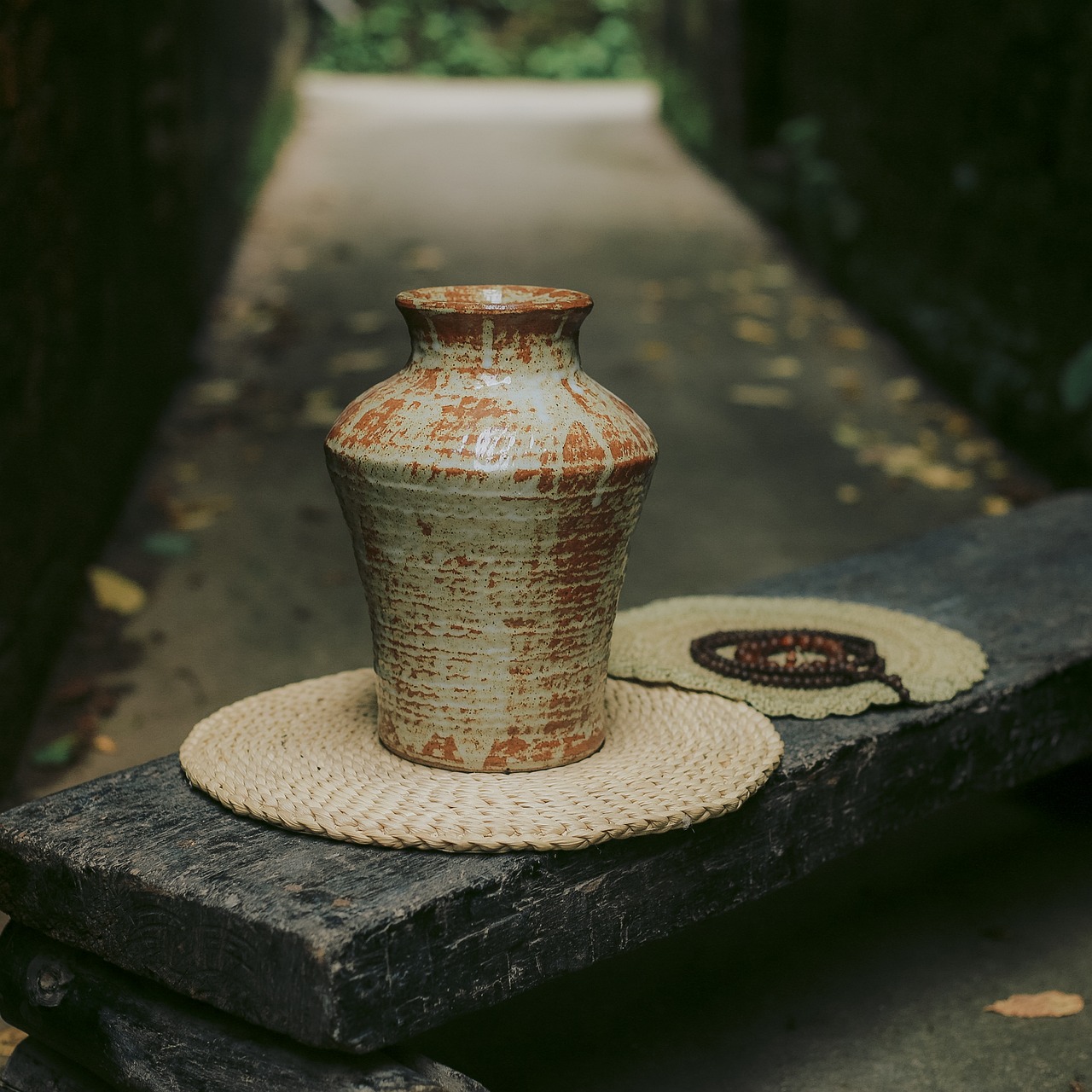
Hand-Building Methods
Hand-building methods are some of the most ancient and expressive techniques in the world of pottery. These methods allow artisans to mold and shape clay using their hands, creating unique pieces that often carry a personal touch and artistic flair. Unlike wheel-throwing, which relies on mechanical tools, hand-building techniques embrace the natural imperfections and organic forms that come from human touch. Imagine the feeling of clay slipping through your fingers, transforming into something beautiful and functional; it’s a tactile experience that connects the creator to their craft in a deeply personal way.
Among the various hand-building methods, two of the most notable are coiling and pinching. Each technique has its own charm and intricacies, allowing potters to explore their creativity while producing stunning works of art. With coiling, for instance, the process involves rolling out long strands of clay, or coils, which are then stacked and blended together to create the walls of a pot or sculpture. This method not only allows for an impressive range of shapes and sizes but also encourages potters to experiment with height, width, and texture. It’s like building a clay tower, layer by layer, where each coil adds character and depth.
On the other hand, the pinching technique is as simple as it is effective. This method involves taking a ball of clay and using your fingers to pinch and shape it into a desired form. The beauty of pinching lies in its simplicity; it allows for spontaneous creativity and often results in organic, asymmetrical designs that feel alive. Whether creating small bowls or intricate figurines, the pinch method offers a direct connection to the clay, making it an ideal choice for those who enjoy a hands-on approach to art.
Both coiling and pinching not only showcase the potter's skill but also reflect their artistic vision. The choice of color, texture, and form can convey emotions and stories, making each piece a unique expression of the artist's identity. For many, hand-building is not just a technique; it is a way to communicate and connect with others through the universal language of art.
In addition to coiling and pinching, there are other hand-building methods that potters employ to push the boundaries of their creativity. Techniques such as slab building, where flat pieces of clay are joined together, allow for even more complex structures and designs. Each method offers a new avenue for exploration, ensuring that hand-building remains a vibrant and evolving aspect of pottery.
Ultimately, hand-building methods are a testament to the enduring nature of pottery as an art form. They invite artisans and enthusiasts alike to engage with clay in a way that is both personal and profound. As we delve deeper into the world of ceramics, it becomes clear that these techniques not only serve practical purposes but also celebrate the rich tapestry of human creativity.
- What is the difference between hand-building and wheel-throwing?
Hand-building involves shaping clay using only your hands, while wheel-throwing utilizes a potter's wheel to create symmetrical forms. - Can beginners learn hand-building techniques?
Absolutely! Hand-building is often recommended for beginners as it requires minimal equipment and allows for more exploration and creativity. - What types of clay are best for hand-building?
Earthenware, stoneware, and porcelain are popular choices, each offering different textures and firing temperatures. - How can I improve my hand-building skills?
Practice is key! Experiment with different techniques, take classes, and don’t be afraid to make mistakes along the way.
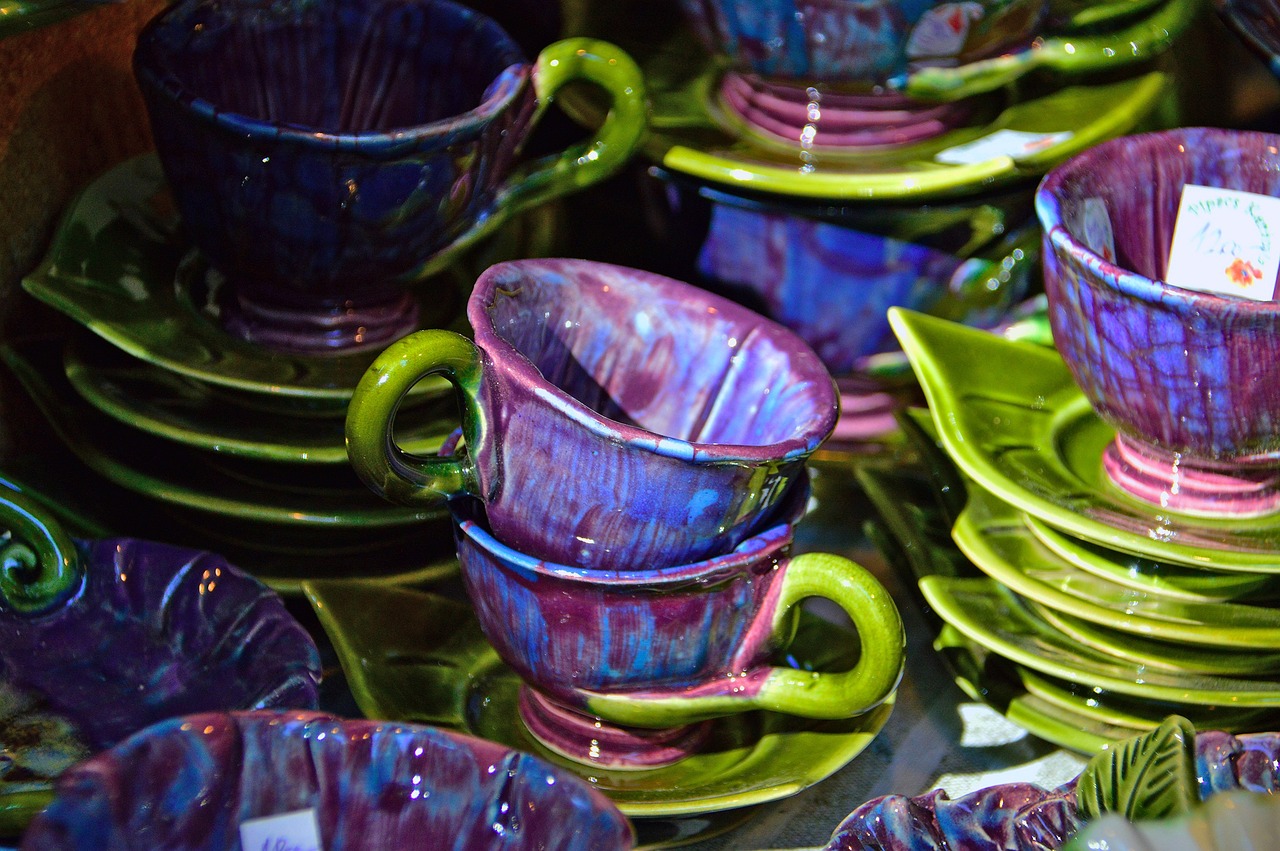
Coiling Technique
The is one of the oldest and most fascinating methods of pottery making, allowing artisans to create both functional and artistic pieces. This age-old practice involves rolling out long, snake-like strands of clay, which are then stacked and blended together to form the walls of a pot or vessel. Imagine building a structure with clay ropes; it's both an art and a science! The beauty of coiling lies in its versatility—each coil can be manipulated to create unique shapes, sizes, and textures, making every piece a one-of-a-kind creation.
As artisans work with the clay, they often employ various techniques to enhance the aesthetics and functionality of their pieces. For instance, the edges of the coils can be smoothed out to create a seamless look, or they can be left textured for a rustic feel. This method not only allows for creativity but also serves as a canvas for personal expression. Many potters take pride in their individual styles, which can be seen in the distinct patterns and forms they create. The coiling technique can be broken down into several key steps:
- Preparation: The clay is first wedged to remove air bubbles and ensure uniform consistency.
- Creating Coils: Long strands of clay are rolled out, usually about the thickness of a finger.
- Building Up: The coils are stacked and shaped into the desired form, with each layer carefully joined to the previous one.
- Finishing Touches: After the desired height and shape are achieved, artisans can carve, smooth, or add decorative elements to their work.
The coiling technique is not just about making pottery; it's about connecting with the material and the traditions that have been passed down through generations. For many cultures, this method holds significant cultural value, often associated with storytelling and community. Each piece tells a story, reflecting the artisan's heritage and experiences. It’s like a time capsule, preserving the essence of a culture through clay.
Moreover, the coiling technique has evolved over time, adapting to contemporary practices while still honoring traditional roots. Modern potters might incorporate glazes and surface treatments that were not available in ancient times, allowing for new dimensions in color and texture. This blend of old and new makes coiled pottery not only a craft but also a vibrant form of artistic expression that continues to inspire and captivate audiences today.
In conclusion, the coiling technique is more than just a method of creating pottery; it is a journey through history, culture, and creativity. Whether you are a seasoned potter or a curious beginner, engaging with this technique offers a unique opportunity to explore the depths of your artistic potential while connecting with a rich tradition that spans thousands of years.
- What materials do I need to start coiling pottery? You will need clay, a work surface, a rolling pin, and tools for smoothing and shaping.
- Is coiling suitable for beginners? Absolutely! Coiling is a great way for beginners to learn about working with clay and developing their skills.
- Can I use air-dry clay for coiling? Yes, air-dry clay can be used, but traditional clay that is fired in a kiln will yield more durable results.
- How long does it take to complete a coiled pottery piece? The time varies depending on the size and complexity of the piece, but it can take anywhere from a few hours to several days.
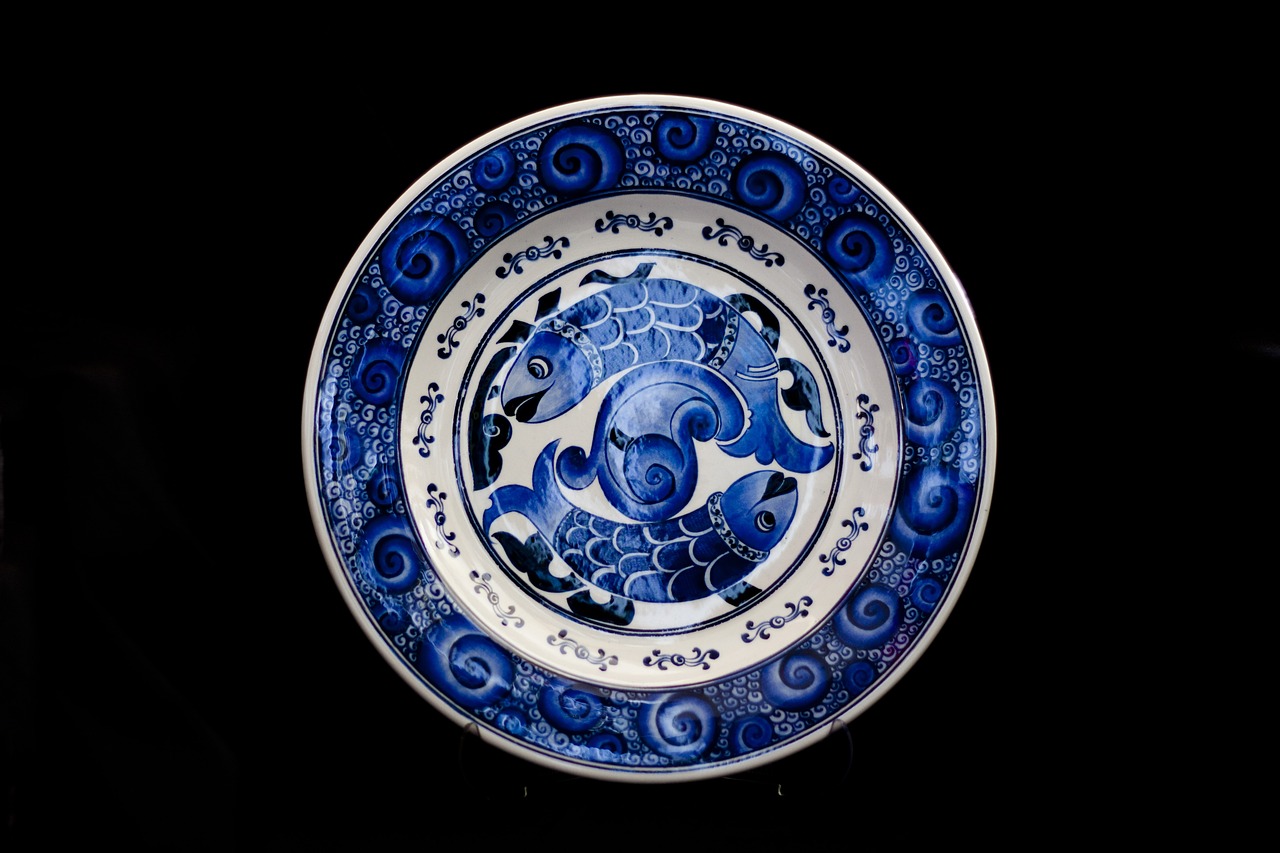
Pinching Technique
The is one of the most ancient methods of shaping clay, and it's as simple as it is effective. Imagine kneading dough for a pizza; the way you use your fingers to mold and manipulate the material is akin to how artisans create pottery using this technique. By pinching the clay with fingers, potters can form organic shapes that reflect both the natural world and their personal creativity. This method allows for a deep connection between the artist and their work, as each piece is uniquely crafted through tactile engagement.
To begin with, the process is straightforward. A ball of clay is taken, and the potter uses their thumb to create an indentation in the center. From there, the fingers are used to pinch the walls of the clay, gradually building up the height and shaping the form. This technique not only allows for a variety of shapes but also encourages spontaneity and improvisation. The result is often a piece that feels alive, with curves and textures that tell a story.
One of the most fascinating aspects of the pinching technique is its versatility. Artisans can create small bowls, cups, or even sculptural pieces that are both functional and decorative. The beauty of pinching lies in its imperfections; each piece carries the fingerprints of its creator, making it a unique work of art. This method is particularly popular among beginners and children, as it requires minimal tools and encourages exploration of form.
In addition to its artistic value, the pinching technique also has a rich cultural significance. Across various cultures, pottery made using this method has been used for both practical and ceremonial purposes. For instance, in many indigenous cultures, pinch pots are created for use in rituals, serving as vessels for offerings or as part of storytelling traditions. The simplicity of the technique allows it to be passed down through generations, keeping the art form alive and evolving.
Overall, the pinching technique is a beautiful blend of art and functionality. It embodies the spirit of creativity, allowing artisans to express themselves while crafting pieces that resonate with history and culture. Whether you're a seasoned potter or a curious beginner, trying your hand at pinching can lead to delightful discoveries and a deeper appreciation for the art of pottery.
- What is the pinching technique in pottery? The pinching technique involves shaping clay by pinching it with fingers, allowing for organic forms and unique designs.
- Is pinching suitable for beginners? Yes, the pinching technique is great for beginners as it requires minimal tools and encourages creativity.
- What types of pottery can be made using the pinching technique? You can create various items, including bowls, cups, and sculptural pieces, all reflecting the artisan's personal touch.
- How does the pinching technique connect to cultural practices? Many cultures use pinch pots in rituals and ceremonies, highlighting their significance in storytelling and tradition.

Wheel-Throwing Innovations
Ah, the potter's wheel! It’s like the magic wand of the pottery world. Imagine a time when artisans were crafting their wares by hand, and then, suddenly, the potter's wheel came along and changed everything. This innovation wasn’t just a tool; it was a game-changer that brought a whirlwind of efficiency and creativity to the art of pottery making. Before the wheel, creating symmetrical pieces was a laborious task, often resulting in uneven shapes that lacked the finesse of modern pottery. But with the introduction of this spinning marvel, artisans could effortlessly shape their clay into beautiful, uniform vessels that would soon become essential in households across various cultures.
The potter's wheel operates on a simple yet ingenious principle: it spins the clay, allowing artisans to shape it with their hands as it turns. This motion not only enhances the speed of production but also provides a level of precision that hand-building techniques simply cannot match. Think of it like riding a bike; once you get the hang of it, everything just flows. The wheel allows for a rhythm in the crafting process, where the clay dances under the potter’s skilled hands, transforming into stunning forms that can be both functional and decorative.
Over the centuries, wheel-throwing techniques have evolved, influenced by cultural exchanges and technological advancements. For instance, in ancient Mesopotamia, potters used simple, hand-operated wheels that were often foot-powered. As time progressed, these wheels became more sophisticated, allowing for greater speed and control. Today, we have electric wheels that can spin at incredible speeds, giving potters even more creative freedom. But despite these advancements, the essence of wheel-throwing remains rooted in tradition and skill.
One of the most exciting aspects of wheel-throwing is the variety of forms that can be created. From delicate porcelain cups to robust stoneware vases, the possibilities are endless. The process allows artisans to experiment with different shapes, sizes, and glazes, resulting in unique pieces that often tell a story. For example, a simple bowl can be transformed into a work of art with the addition of intricate carvings or vibrant glazes that reflect the potter's personal style or cultural background.
To illustrate the impact of wheel-throwing on pottery, consider the following table that highlights some key innovations in wheel technology over the years:
| Time Period | Innovation | Description |
|---|---|---|
| 3500 BC | Hand-Operated Wheel | Early potters used simple wheels turned by hand to create pottery. |
| 3000 BC | Foot-Powered Wheel | A significant advancement allowing for faster spinning and shaping of clay. |
| 20th Century | Electric Potter's Wheel | Revolutionized pottery making with consistent speed and ease of use. |
In conclusion, the innovations in wheel-throwing have not only enhanced the efficiency of pottery making but have also expanded the creative possibilities for artisans. The potter's wheel has become a symbol of artistic expression, bridging the gap between functionality and aesthetics. So, the next time you admire a beautifully crafted piece of pottery, remember the centuries of innovation and skill that have gone into its creation. It's more than just a bowl or a vase; it's a testament to human creativity and the enduring legacy of pottery.
Q: What is the difference between hand-building and wheel-throwing?
A: Hand-building involves shaping clay without the use of a wheel, often using techniques like coiling or pinching. Wheel-throwing, on the other hand, uses a spinning wheel to create symmetrical and intricate forms with greater precision.
Q: Can anyone learn to use a potter's wheel?
A: Absolutely! With practice and patience, anyone can learn to use a potter's wheel. Many pottery studios offer classes for beginners, making it accessible to all.
Q: What types of pottery can be made using the wheel?
A: The wheel can be used to create a wide variety of pottery, including bowls, mugs, vases, and decorative pieces. The only limit is your creativity!

Cultural Significance of Pottery
Pottery is more than just a collection of clay objects; it is a vibrant tapestry that weaves together the stories, traditions, and identities of various cultures around the world. From the earliest civilizations to modern-day artisans, pottery has played a crucial role in daily life, serving both functional and symbolic purposes. Imagine walking into a home adorned with beautifully crafted pottery that tells a tale of its maker's heritage, beliefs, and aspirations. This art form is a reflection of cultural identity, encapsulating the essence of a community's values and practices.
Throughout history, pottery has been utilized for a myriad of purposes, ranging from everyday cooking vessels to ceremonial artifacts. In many cultures, pottery is not merely a tool but a medium of expression. For example, in Indigenous cultures, pottery often features intricate designs that symbolize stories from their mythology or represent their connection to nature. The colors, shapes, and motifs used in these pieces are deeply rooted in cultural significance, often passed down through generations.
Moreover, pottery is frequently involved in rituals and ceremonies, serving as a bridge between the physical and spiritual realms. In many African cultures, for instance, pottery is used in ritualistic practices, where specific items are crafted for ceremonies, such as weddings, funerals, and rites of passage. These pieces are not just functional; they hold profound meanings and are often considered sacred. As such, the craftsmanship involved in creating these items is seen as a spiritual practice, where artisans pour their intentions and beliefs into every piece.
To better understand the cultural significance of pottery, let’s explore some key aspects:
- Functional Use: Pottery serves practical purposes, such as cooking, storage, and serving food. It is integral to daily life.
- Artistic Expression: Many potters use their craft to express creativity, resulting in unique forms and designs that reflect their cultural background.
- Symbolism: Different cultures incorporate specific symbols and motifs in their pottery that convey stories, beliefs, and values.
- Rituals and Ceremonies: Pottery often plays a significant role in cultural rituals, enhancing the spiritual experience and connecting individuals to their heritage.
The interplay between pottery and culture is a fascinating journey through time, revealing how these objects can transcend their physical form to embody the spirit of a people. Whether it’s a simple clay bowl or an intricately designed ceremonial piece, pottery continues to be a vital part of human expression. As we appreciate these artifacts, we not only celebrate the artistry involved but also acknowledge the rich histories and traditions they represent.
Q: What is the historical significance of pottery?
A: Pottery has been a crucial part of human civilization for thousands of years, serving as a means of storage, cooking, and artistic expression. It reflects the cultural identity and technological advancements of societies throughout history.
Q: How does pottery vary across different cultures?
A: Pottery varies significantly across cultures in terms of design, materials, and techniques. Each culture incorporates unique symbols and motifs in their pottery that convey their beliefs, values, and stories.
Q: What are the different techniques used in pottery making?
A: Common techniques include hand-building methods like coiling and pinching, as well as wheel-throwing. Each method offers different possibilities for creativity and expression.

Symbolism in Pottery
When we think about pottery, we often imagine beautiful vessels and intricate designs, but there’s so much more beneath the surface. Pottery is a canvas on which cultures have painted their stories, beliefs, and values. Each piece of pottery is not just a functional item; it is a symbolic representation of the people who created it. For instance, many indigenous cultures have used pottery to convey their relationship with nature, spirituality, and community.
Take the Native American pottery, for example. The intricate patterns and symbols etched into the clay often represent elements of their natural surroundings, such as animals, plants, and celestial bodies. These motifs do not merely decorate the surface; they embody the spiritual connection these communities have with the earth. Similarly, in ancient Chinese pottery, the use of specific colors and designs was often linked to feng shui principles, believed to bring harmony and balance into the home.
In many cultures, pottery serves a dual purpose. It is both a practical item and a vessel of meaning. For example, in African cultures, pottery is often used in rituals and ceremonies, where the designs can symbolize fertility, prosperity, or ancestral spirits. The shapes and colors chosen for these pieces are not random; they are carefully selected to convey specific messages and intentions.
To illustrate this point further, let’s look at a few common symbols found in pottery across different cultures:
| Culture | Symbol | Meaning |
|---|---|---|
| Native American | Spirals | Life cycles and the journey of life |
| Chinese | Dragons | Strength, power, and good fortune |
| African | Circles | Unity and community |
| Greek | Meanders | Infinity and the eternal flow of life |
As we can see, these symbols are not just decorative; they carry profound meanings that resonate with the beliefs and traditions of their respective cultures. Pottery becomes a storyteller, weaving narratives that connect generations. It reflects the values of a society, showcasing what they hold dear, whether it be their connection to nature, their spiritual beliefs, or their communal ties.
Moreover, the act of creating pottery itself can be seen as a symbolic ritual. The process of molding clay, firing it, and painting it can be a meditative practice, allowing artisans to channel their emotions and thoughts into their work. This connection between the creator and the creation adds another layer of meaning to the pottery, making each piece a unique expression of the artist’s inner world.
In conclusion, the symbolism in pottery is a fascinating aspect of this ancient craft. It transcends mere functionality, inviting us to explore the rich cultural narratives embedded in clay. Each piece serves as a reminder of our shared humanity, our beliefs, and the stories that define us. So, the next time you come across a piece of pottery, take a moment to appreciate not just its beauty, but the depth of meaning it may hold.
- What is the significance of symbols in pottery? Symbols in pottery often convey cultural beliefs, stories, and values, making each piece a reflection of the society that created it.
- How do different cultures use pottery? Different cultures use pottery for various purposes, including functional items, ceremonial objects, and artistic expressions.
- Can pottery be both functional and artistic? Absolutely! Many pottery pieces serve practical purposes while also showcasing artistic designs and symbolism.
- What are some common symbols found in pottery? Common symbols include animals, nature motifs, and geometric designs, each carrying its own meaning within different cultures.
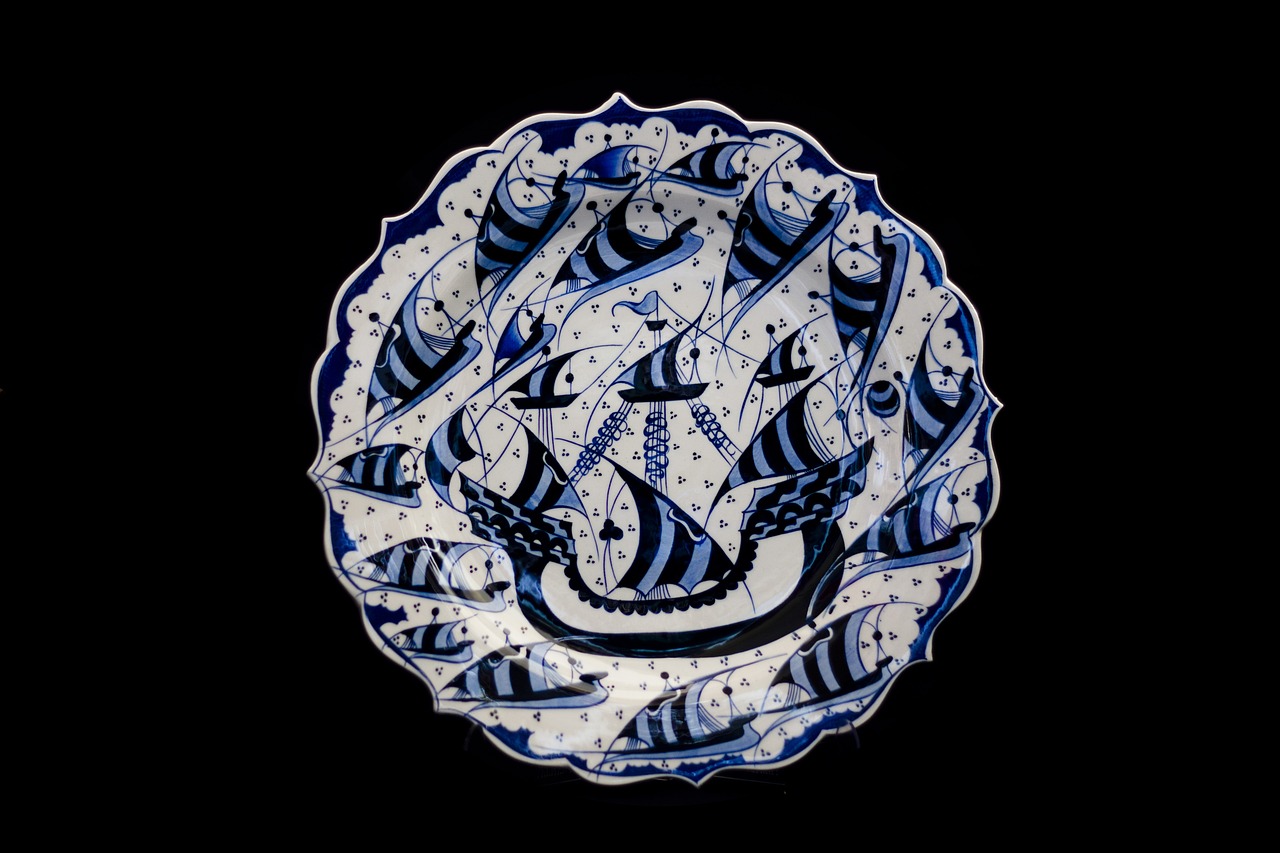
Pottery in Rituals and Ceremonies
Pottery has long been intertwined with human culture, serving as a vessel for both practical use and spiritual expression. Across various civilizations, pottery has played a pivotal role in rituals and ceremonies, acting as a bridge between the mundane and the sacred. From ancient burial practices to modern-day celebrations, pottery is much more than just clay shaped into form; it embodies the history, beliefs, and values of a community.
In many cultures, pottery is utilized in rituals that honor deities or commemorate significant life events. For instance, in numerous indigenous cultures, ceremonial vessels are crafted specifically for offerings to spirits or ancestors. These vessels often feature intricate designs that tell stories or symbolize the beliefs of the people. The process of creating these pots is often seen as a spiritual practice itself, where the potter connects with the earth and the divine.
Moreover, pottery is central to various ceremonies, including weddings, births, and funerals. In some traditions, specific types of pottery are used to serve food and drink during communal feasts, reinforcing social bonds and shared identity. The act of passing around a beautifully crafted pot can transform a simple meal into a sacred gathering. For instance, in many African cultures, the calabash is not only a functional item but also a symbol of unity and community spirit.
Let's take a closer look at some of the ways pottery is used in rituals and ceremonies:
- Funerary Practices: In many ancient cultures, pottery was placed in graves as offerings to the deceased, believed to provide comfort in the afterlife.
- Weddings: Special pots may be exchanged between couples or used in traditional wedding ceremonies to symbolize fertility and prosperity.
- Religious Offerings: Many cultures create specific vessels for offerings, often decorated with symbols that represent their faith.
Furthermore, the significance of pottery in these contexts is not limited to its physical form. The ceremonial aspects also involve the stories and traditions passed down through generations. Each piece of pottery carries with it a narrative, a connection to the past that enriches the present. For example, in Native American cultures, pottery is often adorned with motifs that reflect their connection to nature and the cosmos, serving as a reminder of their place within the larger universe.
As we explore the role of pottery in rituals and ceremonies, it becomes evident that these artifacts are not merely utilitarian objects. They are imbued with meaning, representing the aspirations, fears, and hopes of those who create and use them. Whether it’s a simple clay pot or an elaborately decorated ceremonial vessel, pottery continues to be a vital part of human expression, linking us to our ancestors and to each other.
- What is the significance of pottery in different cultures?
Pottery serves various functions, from practical uses in daily life to symbolic roles in rituals and ceremonies, reflecting cultural identity and heritage. - How has pottery evolved over time?
The techniques and styles of pottery have changed significantly, influenced by technological advancements and cultural exchanges throughout history. - What are some common pottery techniques?
Common techniques include hand-building methods like coiling and pinching, as well as wheel-throwing, each offering unique artistic possibilities.
Frequently Asked Questions
-
What is the history of ceramics?
Ceramics have a fascinating history that dates back to around 29,000 BC. The earliest known ceramic artifacts, such as the Venus of Dolní Věstonice, were discovered in the Czech Republic. These early creations were primarily utilitarian, serving as storage and cooking vessels. Over time, ceramics evolved into a significant form of artistic expression, reflecting the culture and technological advancements of various civilizations.
-
What are the main pottery techniques?
There are several key pottery techniques that have been developed over the ages. The most notable include hand-building methods, such as coiling and pinching, as well as wheel-throwing. Each technique offers unique creative possibilities and reflects the artisan's skill. For instance, coiling allows for organic shapes, while wheel-throwing enables precise, symmetrical forms.
-
What is the coiling technique in pottery?
The coiling technique involves rolling out long strands of clay and stacking them to create the walls of a pot or sculpture. This method not only allows for functional pieces but also opens up avenues for artistic expression, letting potters create intricate designs and shapes that are truly one-of-a-kind.
-
How does the wheel-throwing technique work?
Wheel-throwing is a game-changer in pottery-making. It involves using a potter's wheel to spin a lump of clay, allowing the potter to shape it into symmetrical forms with precision. This technique significantly speeds up the pottery-making process and enables the creation of complex designs that might be challenging to achieve by hand.
-
Why is pottery culturally significant?
Pottery holds immense cultural significance as it often reflects the identity and heritage of a community. Different cultures have used pottery for various purposes, from functional items like dishes to ceremonial pieces imbued with spiritual meanings. The designs and motifs in pottery can tell stories, convey beliefs, and preserve traditions, making it an essential aspect of cultural expression.
-
What role does pottery play in rituals and ceremonies?
In many cultures, pottery plays a crucial role in rituals and ceremonies. It is often used in religious practices, serving as vessels for offerings or as part of ceremonial displays. The significance of these pieces goes beyond their functionality; they embody the spirituality and cultural values of the communities that create and use them.
-
Can pottery be both functional and artistic?
Absolutely! Pottery beautifully bridges the gap between functionality and artistry. Many potters create pieces that are not only practical for everyday use but also serve as stunning works of art. This duality is what makes pottery such a beloved craft, allowing artisans to express their creativity while providing useful items for daily life.



















